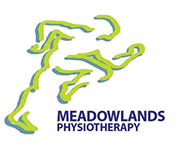Can Physiotherapy Improve Parkinson’s?
People with Parkinson’s usually have two priorities, their friends and family, and maintaining or improving their quality of life. These two goals are closely related. Your family and friends want the best for you which means that staying as healthy, mobile, and comfortable as possible is helping them as much as it is helping you.
Physiotherapy has been proven to help people with Parkinson’s maintain their quality of life, increase range of motion, improve mobility, and maintain their independence. Joyce Gordon, the CEO of the Parkinson Society of Canada says “how ironic that the symptoms Parkinson’s is most known for— loss of movement, balance, rigidity— improve with physical activity.”
Physiotherapy for Parkinson’s
As President of the Canadian Physiotherapy Association, Rob Werstine says, “staying active, improving balance, flexibility and strength are important to everyone’s health, but they are even more important for people with Parkinson’s because rigidity, poor balance and a tendency to fall are common with the condition.“ For people with Parkinson’s, physiotherapy is the safest and most effective method of achieving the necessary levels of physical activity.
Under the watchful eyes of trained professionals, people with Parkinson’s can stay active without the risks involved with exercising on their own.
Some of the common issues associated with Parkinson’s, which can be improved through physiotherapy include:
- Balance: Maintaining balance can be one of the biggest challenges to people with Parkinson’s, but it serves as a vital foundation for improving posture, walking speed, and reducing risk of falls
- Posture: Bad posture makes reaching things, maintaining a wide range of motion, and maintaining balance more difficult. It can also have a detrimental effect on the patient’s self-image and confidence
- Walking: Many people with Parkinson’s begin to notice their walking speed rapidly slowing, and if their balance is compromised it can lead to falls
- Range of motion: A wide range of motion allows patients to remain as independent as possible, even if they are confined to a wheelchair
- Muscle weakness: Strength, particularly core strength, is vital for staying independent
- Abnormal movement patterns: One of the most well-known and devastating consequences of Parkinson’s is abnormal movement patterns. While physiotherapy can’t prevent them entirely, it can teach patients how to deal with them
- High risk of falls: Improving balance, strength, posture, and range of motion all help reduce the risk of falling. Physiotherapy will also help teach people with Parkinson’s methods to avoid falling, and give them a safe, supervised place to exercise without risking the serious injuries caused by a fall.
Home Physio for Parkinson’s
If you have Parkinson’s there are many basic exercises that you can do at home to help increase your activity level, and address some of the specific issues you may be dealing with.
Walking
- Walk heel to toe in a straight line.
- Walk sideways
- Walk on a treadmill to force yourself to keep a faster pace.
Balance, Posture, Flexibility, and strength
- Balance on one leg while supporting yourself when necessary on a wall, or piece of furniture.
- Raise your arms and stretch back over a chair
- Sit upright and twist your torso left and right
Before undertaking any sort of exercise regime at home you should speak to a professional physiotherapist. Give the team at Meadowlands a call. Our physiotherapists have experience successfully treating patients with Parkinson’s.

